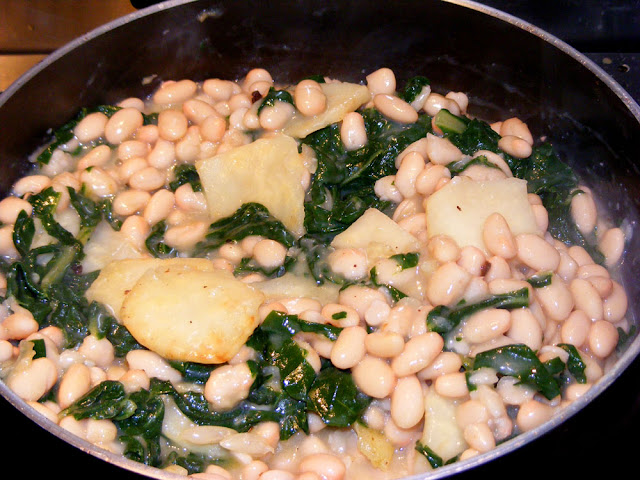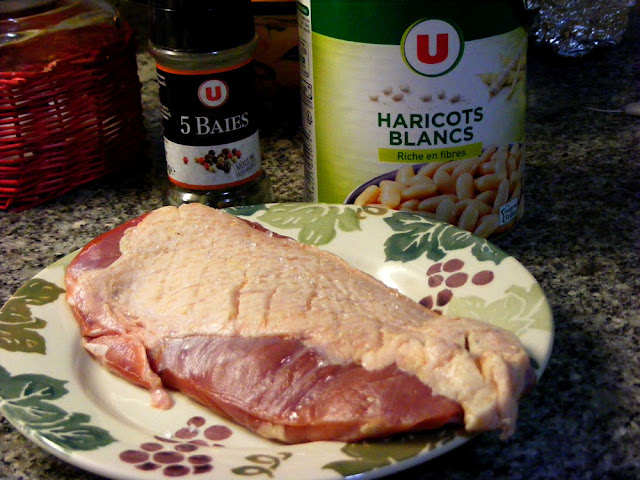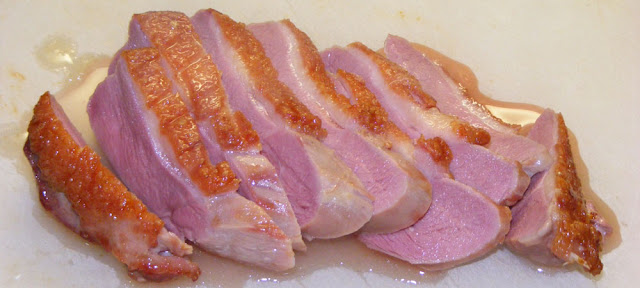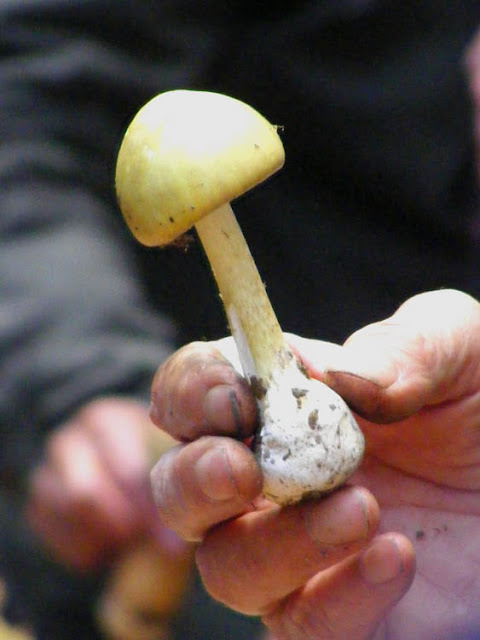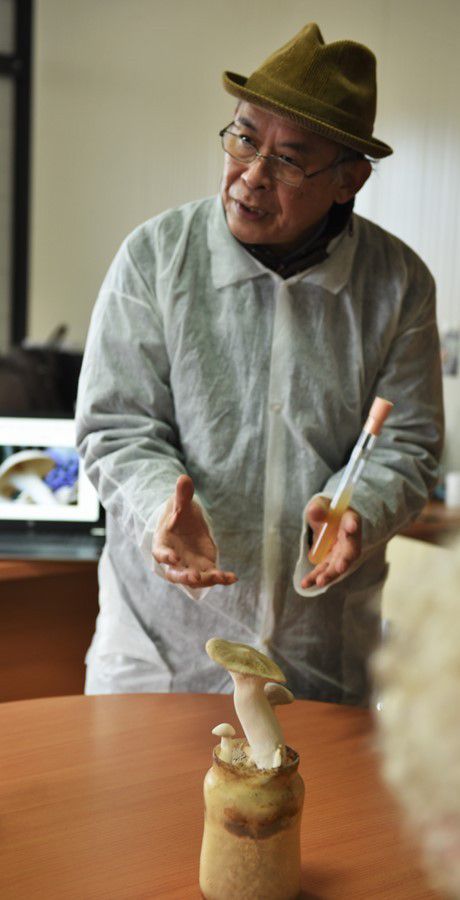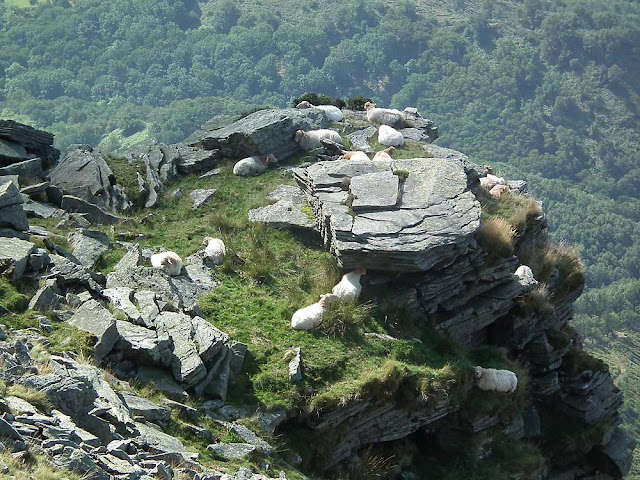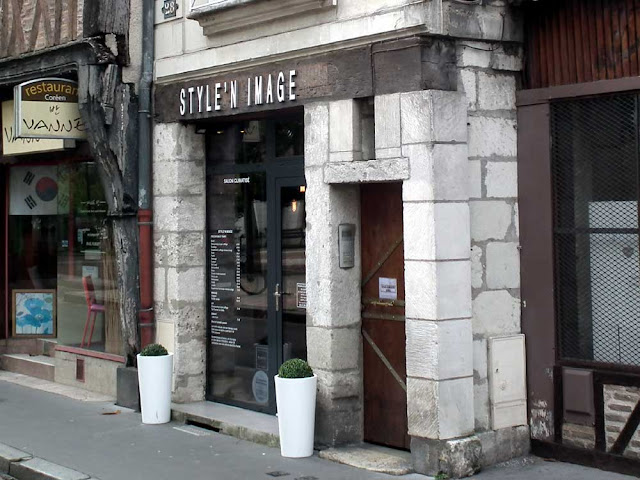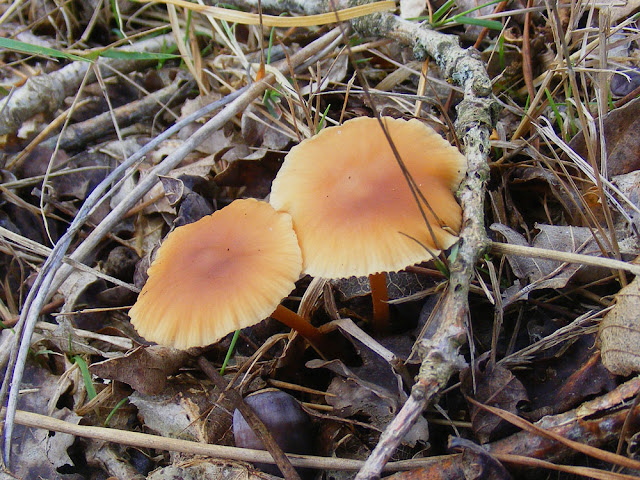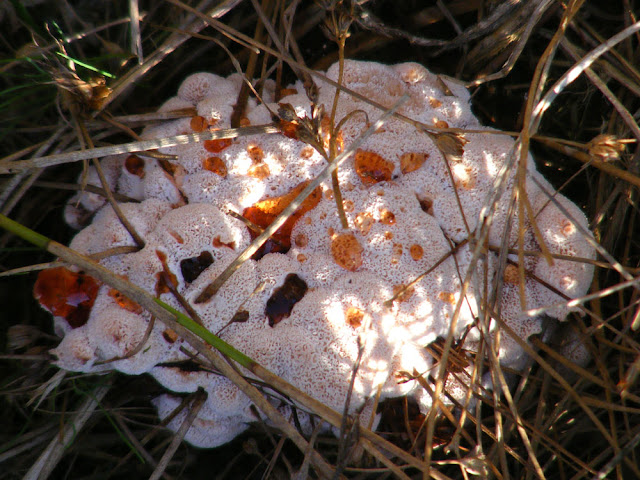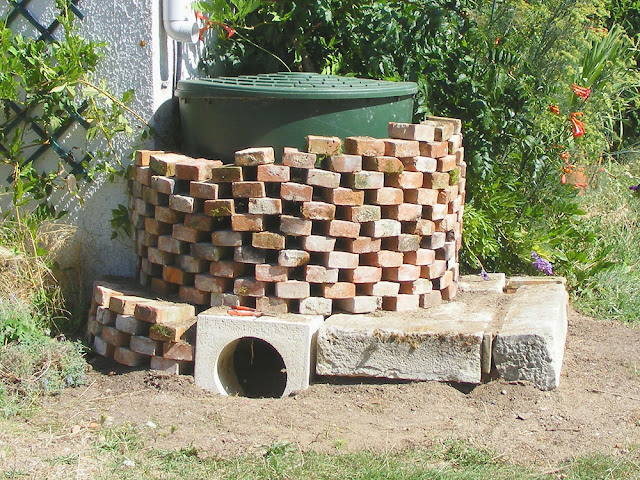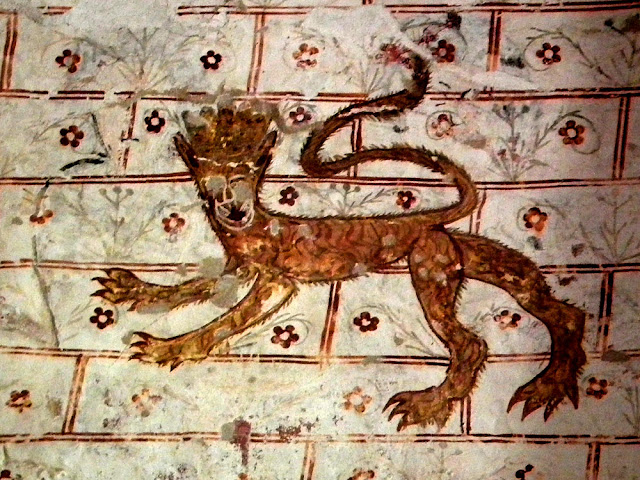Mérigny is in the middle of nowhere in the Brenne, on the border between Poitou and Berry, but once upon a time there was a great medieval castle there, and surviving still, a few hundred metres away, a small but rather wonderful chapel. The chateau estate is in private hands and the castle long ago demolished and replaced with something more modern (still a couple of hundred years old though). After a parlous few centuries the chapel, now on an island between two rural roads not much more than tracks, is now loved and protected, owned and maintained by the Brenne Park Authority.
The apse.
The chapel building dates from 1110-20 and is a harmonious Romanesque structure of great simplicity sheltering some remarkable wall paintings. Because of its location it is hardly known outside the local area, and its history is a bit mysterious. It is worth a bit of a detour to see the interior and we treated it as a day out with friends in the summer, especially as the resident guide is my friend Sylvain.
St Eligius shoes a horse in a miraculous way.
The paintings were done between 1170 and the 15th century in several phases. They depict fantastical animals, medieval legends and visitors are invited in to a rich and appealing imaginary world.
Once part of a Commanderie of the Knights Hospitallers of Saint John of Jerusalem (now the Order of Malta) who would have come here every day for mass. Almost by chance it has remained intact, except for the loss of the Poitevin style stone spire on the belltower. Some of the early paintings, such as the Tree of Knowledge, are of exceptional interest, as are the 14th or 15th century animal characters from fables such as Reynard the Fox (the Roman de Renart in French) and legend of Saint Eligius (Saint Eloi in French).
Floral decorative wall painting.
But in 1632 the Hospitallers departed and the chapel was abandoned for three centuries. It got turned into a barn, storing piles of hay and beets, as well as sheltering animals. During the Revolution it was extensively damaged.
Detail of wall painting depicting the Roman de Renart.
In the 19th century it was bought as part of the chateau estate, but now a road separates the chapel from the rest of the chateau park. The construction of the road meant the chapel started to lean dangerously, as its smooth stones started slipping towards the road.
A Plantagenet lion.
Declared a Historic Monument in 1944, and at risk of ruin, the chapel was purchased by the Brenne Park Authority for one franc in the 20th century. They then set about an extensive programme of stabilising, restoring and conserving the building and installing interpretation panels.
From the outside, we can see an archway with a geometric or vegetal decoration surmounted by an open bay in the triangular gable crowned with an
antefix cross. Only the facade and the apse are broken by openings for windows. The rest of the chapel doesn't have direct light, leaving space for large expanses of wall ideal for painting.
Inside there is a single nave with three bays, a narrow choir and then a semi-circular vaulted apse. The bays are separated by paired arches resting on columns with carved capitals.
The Chapelle de Plaincourault.
The paintings from the 13th century use cobalt and copper oxides to obtain blue and green. Before that they are mostly ochre pigments. The colours are still well preserved.
The Garden of Eden.
The oldest painting in the chapel depicts the Garden of Eden, with the Tree of Knowledge looking rather like a giant mushroom. The few scolars who knew about the chapel in the 19th century were very taken with the idea that the mushroom tree represents a shamanic reference to Fly Agaric Amanita muscari. Not everyone took this too seriously though, as there are some wry comments about how Eve looks as if she is suffering from colic rather than shame.
Next to the Garden of Eden is the Virgin, seated on a throne with the baby Jesus in her arms and surrounded by a
mandorla.
Crucifixion.
On the other side of the Virgin is a 12th century crucifixion, clearly influenced by earlier 9th and 10th century paintings, with the cross arms ending in 'T's (a style that ceased in the 10th century). The rather unusual representation of Jesus on the cross is also a clue. He is shown with open eyes, still alive, unwounded and his feet are splayed, not superimposed.
This wall painting shows a pentimento.
On the left hand wall we have a scene from the life of Saint Eligius, from the 14th century, showing him miraculously shoeing a reluctant horse, having removed the horse's hoof for convenience. He has a halo, with a hammer in one hand and the hoof in the other. A man holds the leg of the horse whose hindquarters can still be seen. Two men show their amazement behind the saint. Check out the gigantic hands of the characters in relation to their faces: a device used to give an effect of perspective.
We also see traces of a pentimento next to the face of one of the men: pentimento refers to a part of a painting that has been covered, to mask or modify certain details. Most often, pentimenti can only be seen on X-rays because they are hidden under several layers of paint. But in some cases, like this, you can see it very well.
A depiction of the fable the Roman de Renart.
Next to it, we have a scene from the Roman de Renart from the end of the 13th century. Renart plays the violin. Very worn, we see a dog standing on its hind legs (perhaps Roenel the big mastiff), a rooster (Chantecler) followed by a peacock.
On the dome of the apse, we can see Christ surrounded by the animals of the four evangelists.
Mystery coats of arms.
Not to mention a portion of the wall covered with coats of arms, the study of which in 2013 did not reveal much, despite modern techniques of lighting and magnification being applied for meticulous examination. The scientists wanted to establish the stages of creation, what techiques were used, how many artists there were and to photograph the work for ease of study.
For details of opening hours for visits and how to get there, see the
Berry Province website.
************************************************
For details of our private guided tours of chateaux, gardens, wineries, markets and more please visit the
Loire Valley Time Travel website. We would be delighted to design a tour for you.
We are also on
Instagram, so check us out to see a regularly updated selection of our very best photos.


